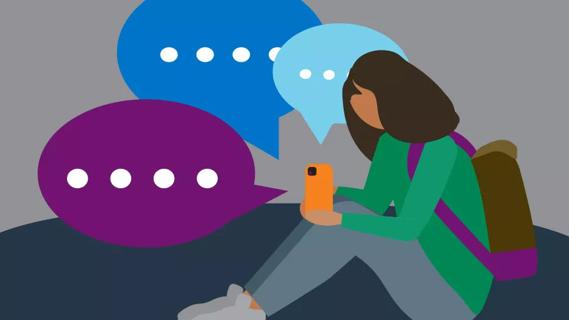Wearing this undergarment for too long will do more harm than good

It’s the third time you’ve put off going to the gym. You’re feeling frustrated and are wondering if you’ll ever get on a consistent workout routine. So, you google “waist trainers” — a product reminiscent of a Victorian-era cincher worn by celebrities like the Kardashians.
Advertisement
Cleveland Clinic is a non-profit academic medical center. Advertising on our site helps support our mission. We do not endorse non-Cleveland Clinic products or services. Policy
Surely, you think to yourself, this could be just the boost I need in my weight-loss journey. But what are waist trainers anyway? While they sound like shapewear, the two are very different.
Hepatologist Jamile Wakim-Fleming, MD, explains the truth behind using waist trainers for weight loss and what you should know before using them.
Waist trainers are a type of undergarment usually made out of a combination of either spandex, nylon or latex. Many designs incorporate some kind of Velcro or belt-like strap and some brands even have plastic or steel boning in them.
They’re meant to be worn under your clothes while at an event or throughout the day as a way to create a more hourglass figure for the body.
How they work: The idea behind waist trainers is that they give the illusion of a smaller-looking waist while attempting to remove fat from around the waist, as well through an intense amount of compression and tightening. A couple of things are happening when you wear a waist trainer. As your stomach area is being tightened and compressed, this leads to the appearance of a slimmer waist, while also causing sweating and a loss of appetite. The combination of these three effects is why waist trainers are marketed as a “quick” way to lose weight.
Advertisement
“They help you drop weight because they tighten the waist so much,” explains Dr. Wakim-Fleming. “So, then, you have a tendency to eat less, especially if you wear them all the time.”
While shapewear is more of a temporary solution for those wanting to achieve an hourglass figure for a night out in a form-fitting dress, waist trainers are on an entirely different level.
As Dr. Wakim-Fleming explains, shapewear is mainly used to smooth out any creases when wearing clothes or to make the body look more proportional, “uniform” or traditionally feminine looking.
The big difference with waist trainers, on the other hand, is that they’re meant to be worn over long periods of time and that the materials they’re made of are much more constrictive.
In short, not really.
The name — waist trainer — suggests that the product is literally training your waist over time to become slimmer. But in fact, as Dr. Wakim-Fleming points out, this isn’t really possible. And what waist trainers do achieve is only temporary.
“There’s a lot involved with weight loss,” she says. “It may be tightening our waist, which means we may look small or we may even lose weight temporarily.” As she explains, the main way that waist trainers actually make you lose weight temporarily is by suppressing your appetite — which isn’t a sustainable approach to weight loss.
“Because now that your stomach is being squeezed, you don’t have enough space in the stomach to hold as many nutrients from food as you did. So, you lose a little bit of weight. But this is not a permanent thing,” she continues.
And the fatigue that’s associated with these products may not be worth the short-lived results.
The main risks of wearing waist trainers involve the longevity of use. In other words, if you’re wearing them for long periods of time, that can lead to some health concerns, including:
While the waist trainers focus on your stomach, the compression can also have an effect on your lungs. The undergarment squeezes your sternum and ribs — causing difficulty breathing.
“This is because you’re not getting enough oxygen with each breath and you’re tightening the body to the point where you may cause poor circulation, which can lead to issues with your heart,” says Dr. Wakim-Fleming.
A blog post from the American Board of Cosmetic Surgery recommended against using waist trainers for this very reason.
Suffice it to say, your digestive system doesn’t like being squeezed. Have you ever had someone poke you when your stomach was full? Well, long-term use of waist trainers brings that feeling to a new extreme.
Advertisement
“There is a lot of damage on the organs because they’re shifting, stretching the vessels around,” explains Dr. Wakim-Fleming. “This causes people to report more gas because gas is retained, which causes bloating.”
There’s also a concern over acid reflux becoming worse after extensive use of waist trainers. And if you have a history of heartburn — forget about it. The pressure of a waist trainer can force fluids back up through your esophagus, making that burning feeling even worse.
Another concern over waist trainers is that the material could lead to skin irritation. Because it’s so tight and it’s made of microfiber materials, it could be irritating for people with more sensitive skin.
“It’s not really made of a breathable material,” says Dr. Wakim-Fleming. “And so as you’re tightening it, you’re also sweating in it and becomes itchy.”
Especially if you’re prone to certain allergic reactions such as latex, you should steer clear of waist trainers.
Waist trainers don’t just affect the external look of your waist. Over time, Dr. Wakim-Fleming states that this continual compressing of your internal organs can lead to serious damage and can even reduce muscle strength.
“As you’re squeezing your belly, you’re also squeezing your liver, kidneys, pancreas and spleen,” she explains. “And as you’re squeezing those organs, they start to shift and that can be very dangerous in the long run.”
Advertisement
One thing is for sure, waist trainers shouldn’t be an everyday thing. Dr. Wakim-Fleming recommends using waist trainers on a temporary, low-impact basis.
“It’s OK to wear them for a day if you’re going to an event like a wedding,” Dr. Wakim-Fleming advises. “If you want to wear it with a tight dress, that’s fine. But if you start to wear them day and night consecutively, they become very dangerous.”
As a good rule of thumb:
Instead, she recommends using them for special events only, for a couple of hours at a time (at most).
But it’s important to listen to your body, too. You should immediately stop wearing waist trainers if after using them you start to feel symptoms like:
When it comes to actually “shaping” or “training” your body, it all comes down to exercise, combined with a healthy diet. Dr. Wakim-Fleming says keeping your body moving and engaging in rigorous exercise is your best bet if you’re looking to drop some weight in a healthy way.
She adds: “For the average person to lose weight, you have to have good nutrition. It’s best to consult with a dietitian to make sure you’re eating healthy and getting the nutrients that your body needs.”
Advertisement
Learn more about our editorial process.
Advertisement

Focusing on non-physical attributes, practicing body positivity or neutrality, and avoiding comparisons can help

This pattern of self-doubt leads you to worry that someone will discover you’re a fraud and that you don’t deserve the success you’ve earned

Obsessively assessing your appearance? Cognitive behavioral therapy and journaling can help you figure out why you’re doing it — and how to stop

It’s a continual process, but through meaningful practices, you can find peace and positivity with yourself

Horoscopes, fortunetellers and personality tests all feed into our cognitive biases and reinforce our own feelings as true

Ignore the negative self-talk, practice positive affirmations and remember, you’re not perfect — and that’s OK!

Foster communication about social media, encourage whole-person attributes and be mindful of your own negative self-talk

Filters and editing can lead to low self-esteem, depression and even body dysmorphic disorder

The best parenting style balances enforcing rules and showing plenty of love

Tips include cutting back on sugar, focusing on exercise and managing stress

It can be harder to let go when you’ve invested time, energy and emotions — but it might be the healthier choice long term